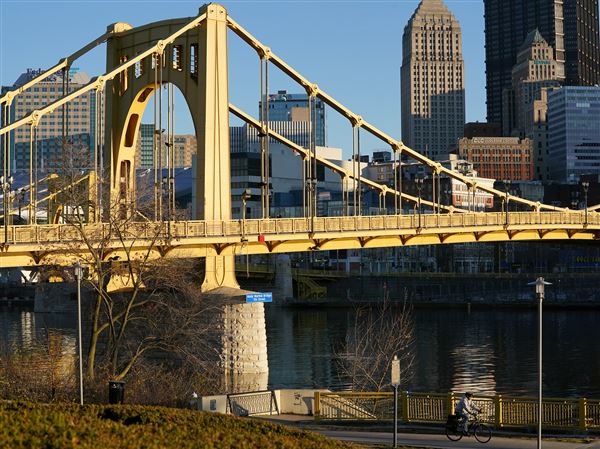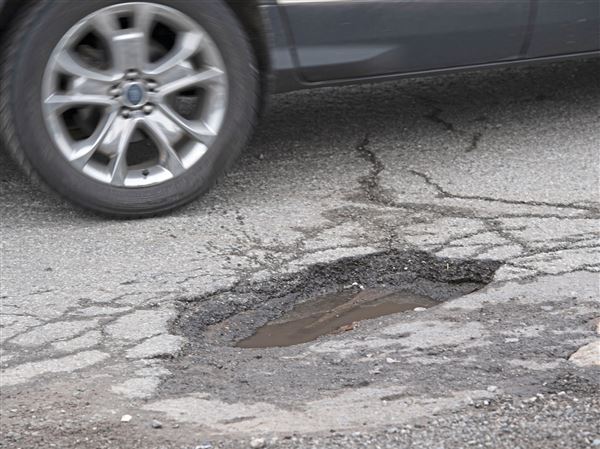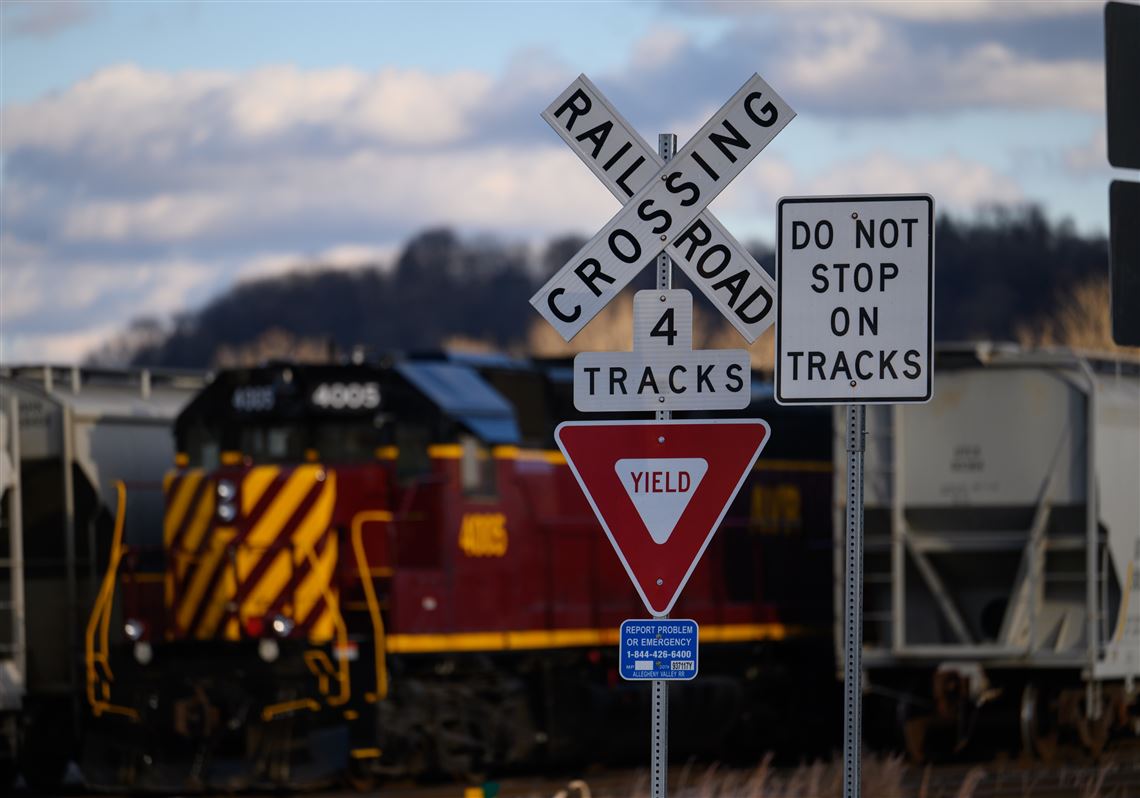DUNCANSVILLE, Pa. — Alan Maples said he knew when he purchased the Everett Railroad Company that the days of prominence and power in the industry were in the past: It was the 80’s; the country was in a recession; the regional unemployment rate hovered near 20%; and all of the forecasting about the future of rail transportation was bleak.
Nonetheless Mr. Maples persisted in his life-long dream — mind you, he was only 21 at the time — of owning and running a railroad. “The previous owners of the railroad, who had had it since 1954, were eager to get rid of it, so I got it for a pretty good price,” Mr. Maples said. “Thankfully, my parents helped me with the purchase by giving me the money that was supposed to be for college fund.”
Mr. Maples laughs, adding that his family also said he was “crazy,” and not to come back for any more money. “The day I got the keys to this old office, I became the youngest railroad owner and president in the history of the industry,” he said.
Short line railroads may sound like relics of the past, but they are one of the most important links in our supply chain — without them, our cupboards would be bare, our electricity would not turn on and essentials from lumber to cars and trucks would never reach our communities.
Chuck Baker, president of the American Short Line and Regional Railroad Association, says there are over 600 short line railroad companies in the United States, providing service for one in every five rail cars you see moving freight across the country. They are all small businesses operating on nearly 50,000 route miles, providing the connection between farmers, manufacturing and other industries — like chemical and energy — and consumers.
“Short line railroads are mostly mom and pop small businesses that are essentially the first mile and last mile of the freight rails system,” said Mr. Baker from the industry’s trade association based in Washington, D.C.
Mr. Baker said the story of short line railroad companies is the story of all American small business success. They generally inherited track that had experienced years of lax maintenance — or no maintenance at all. The grit, personal investment and ingenuity of the owners have created a vibrant small business network that serves a critical role in the movement of freight.
And they are hiding in plain sight. Locally there are several including the Allegheny Valley Railroad — one of three separate short lines that go under the Cargo Express handle — whose offices are in Oakmont but whose operations are run out of Glenwood Yard in Hazelwood, an expansive facility that includes several hundred acres of tracks filled with over 700 cars that operate on 77 miles of track in western Pennsylvania. They carry commodities such as sand, coal, dry bulk resins, food, lumber, ethanol and paper to and from local businesses and farms to “class one” operators.
“What people may not understand is the minimal impact short lines have on our environment: A typical rail car holds about four truckloads of freight, and typically a train moves about 500 tons of freight one mile on a gallon of diesel fuel,” explains Mark Rosner, the president and CEO of the company.
Mr. Rosner said if their railroad disappeared it would have a devastating impact on the environment as well as the roads and bridges trucks use: “If we were gone it would add about 400,000 trucks on local highways.”
Go back a generation or two to the late seventies, and the National Freight Rail System — once an incredible national treasure that was part of the storied history of American exceptionalism, including opening the West — was in horrible shape and on the verge of mass bankruptcy, or even nationalization.
Mr. Baker said while entire books have been written about why that happened, he boils it down to two things: “One would be the incredible competition from the government’s post-World War II trillion-dollar investment into a 4 million mile interstate highway system that goes to the front door of every business and person in America.”
“Railroads, who back to a time when they were the best — and essentially the only — way to move freight and large numbers of people around, struggled to compete with that,” Mr. Baker said.
The other contribution was government. “The collapse was also partially the result of decades of pretty intense regulation of the railroads in a way that didn’t allow them to really act like private businesses and respond to a changing environment, changing business landscape,” he said.
In 1980 — three years before Mr. Maples bought the old Everett Railroad — the railroad industry was partially deregulated through the Staggers Act, which allowed bigger railroads (think Norfolk Southern and CSX) to make private contracts and set their rates more aggressively to respond to the market.
“One of the things it did that’s most relevant for short lines was for their branch lines that were kind of a low-density line — maybe go between two small towns or connect the main line to some small town with just two or three shippers — instead of abandoning them because of their lack of profitably, the Staggers Act allowed the big guys to sell them,” said Mr. Baker.
This opened the door for entrepreneurs like Mr. Maples.
“A class one railroad just can’t make any money running on those small lines to those small towns and industries: It’s too expensive to maintain the track; it’s too expensive to pay their people. It doesn’t make sense to run to a little town with two or three customers with a giant locomotive. And so, what they would do is sell that to a local short liner — and instead of that now being kind of the unprofitable, unloved branch-line of Norfolk Southern or CSX or something, or non-existent at all, that would become the Buffalo and Pittsburgh Railroad.”
In short, if it wasn’t for your local mom and pop short line — there are dozens in every state in the country — small towns, and the agriculture and manufacturing industries that support them, would wither and die.
Mr. Baker said we should think of these short line owners this way: “So the local entrepreneur would now own that railroad, and their whole life becomes about that railroad: They join the local Chamber of Commerce, talk to every potential customer along their line trying to get one work car load of freight and then market the heck out of their capabilities.”
Keep in mind that Mr. Baker said they do it all on a shoe string: “They are getting hand-me-down locomotives. Maybe the owner owns the railroad, and he operates the train on Tuesday and Thursday, and his wife manages the office and keeps the books, and his cousin maintains the track, and his mechanic friend keeps the locomotive in good shape. That story happens 600 times all over the country every day.”
“All on 50,000 miles of track, servicing thousands of customers directly, and millions indirectly,” he said, “making short lines a really crucial part of the freight rail system because we keep all these small towns and rural communities and small shippers connected to the rail network — and in turn, their commodities are connected to the people who live and work in the cities and suburbs who benefit from the fresh produce they find at Whole Foods or the chlorine their local water treatment plants need to keep their water pure and safe.”
The frustrating thing for the short line railroad companies about the threatened rail strike, Mr. Baker said, is that it had nothing to do with them — and yet if it happened, it would shut them down.
“That would very quickly become extraordinarily problematic for our customers because we’re part of a nationwide and sometimes global supply chain that all works generally in pretty good kind of harmony; there’s a lot of moving parts to getting raw materials to manufacturers and finished goods from manufacturers to warehouses and energy supplies to and from producers and users that just won’t get there because most companies can’t keep massive amount of stuff just sitting around,” Mr. Baker said.
“So, they rely on well-functioning freight-system railroads to keep the economy moving, to keep their businesses functioning. So, it would really be only a couple days of railroads not operating before you had major, massive problems in the global economy,” he said.
The catastrophic scenario would include water systems getting shut down because there’s not enough chlorine; chickens getting killed because there’s not enough feed; harvests getting nixed because there’s not enough fertilizer; construction projects getting delayed because there’s no steel or lumber; road projects getting delayed because there’s no ballast — all of these commodities get to class one railroads from short lines across the nation.
While Congress stepped in to avert the strike at the last second, the episode shines a light on the forgotten importance of America’s railroads — especially the underappreciated short lines that keep the economy moving.
North Side native Salena Zito is a national political reporter for The Washington Examiner, a New York Post columnist and co-author of “The Great Revolt”: zito.salena@gmail.com.
First Published: December 4, 2022, 5:00 a.m.



















